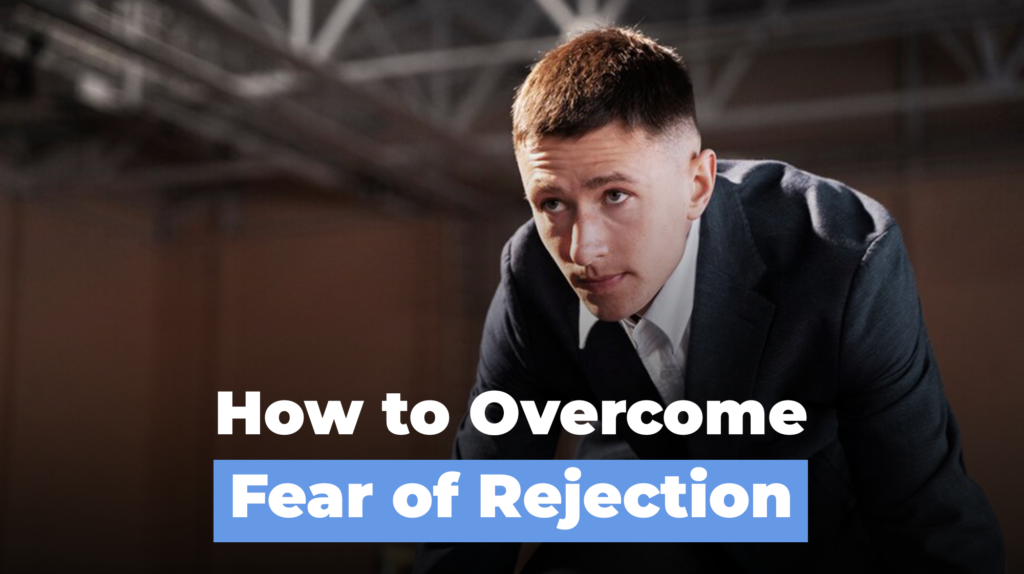
Rejection is a part of life, and learning how to overcome a fear of rejection is essential for personal growth. Whether it’s in relationships, careers, or friendships, we all face moments where we feel unwanted or unappreciated. But when this fear becomes overwhelming, it can hold us back from opportunities, relationships, and experiences that could enrich our lives. If you find yourself avoiding situations where rejection is possible, this guide will help you break free from that fear.
Understanding the Fear of Rejection
The fear of rejection causes anxiety, making people feel disapproved, excluded, or unworthy. Learning how to overcome a fear of rejection is crucial, as this fear can lead to extreme behaviors like clinginess, people-pleasing for validation, or avoidance and withdrawal. In some cases, it even pushes people away to avoid getting hurt.
Past childhood experiences of being neglected, criticized, or abandoned by caregivers can create deep emotional scars, making painful rejections harder to handle. Over time, these fears shape how we connect with others.
Overcoming this fear takes self-awareness and an active effort to change these patterns. Rejection is not a measure of worth but a part of life, and learning to face it with confidence can set us free.
Step 1: Recognize the Patterns

Fear of rejection often operates subconsciously, shaping our thoughts and behaviors. You may avoid situations where you feel judged, struggle to say no, or fear upsetting others. These reactions stem from past experiences that affect your self-worth and how others perceive you.
To move forward, recognize patterns in your actions. Do you hesitate to speak up or avoid difficult talks? Identifying these fears allows you to change them, replacing self-doubt with confidence.
Step 2: Challenge Your Inner Critic

That inner voice in your head that tells you you’re not good enough or that people will never accept you is often just an echo of your past experiences rather than an objective reality. It magnifies fears, making you believe that rejection is more devastating than it actually is. Instead of believing these thoughts, start to question them. Ask yourself: What’s the evidence that this fear is true? Would I say the same things to a friend? By reframing these thoughts, you can weaken their power and stop them from controlling your decisions.
Step 3: Take Calculated Risks to Face Rejection

Avoiding situations where rejection is possible only reinforces fear and makes it harder to break free from self-doubt. Instead, take calculated risks—start small. Speak up in a meeting, initiate a conversation with a stranger, or express an opinion even if someone might disagree. The more you face rejection and survive, the more your fear will lessen because it’s rarely as painful or catastrophic as your mind predicts. Over time, what once felt impossible will become second nature, proving that you are far stronger than your fear.
Step 4: Building Emotional Resilience

Handling rejection well is about developing resilience, the ability to bounce back after setbacks. To truly learn how to overcome a fear of rejection, you need to build a strong sense of self-worth—not based on external validation, but on your own standards and opinions. Having a support system of people who uplift and encourage you is also important. Practicing self-care activities that make you feel good and confident will help you handle rejection better. While rejection can sting, it’s important to allow yourself time to recover before moving forward with a renewed perspective.
Step 5: Turning Rejection into a Learning Experience

Many people see rejection as proof that they’re not good enough, but that’s far from the truth. Rejection is not a reflection of your worth—often, it’s about timing, preferences, or circumstances beyond your control. Instead of taking it personally, look at it as a learning experience. Maybe you got rejected from a job, but that doesn’t mean you’re not capable. It could be a chance to enhance your skills or find a role that’s the right fit for you. Sometimes, rejection saves us from a situation that wasn’t truly meant for us. The key is to move forward rather than dwelling on the past. A simple shift in focus can open the door to new opportunities.
Step 6: Stay Grounded in the Present Moment

Additionally, expressing your feelings by talking to friends or journaling can give you an outside perspective, reminding you that rejection isn’t the end—it’s an opportunity for growth. The more you stay in the present, the less power your fears will have over you.
Step 7: Seek Professional Guidance for Emotional Strength

When fear of rejection starts significantly affecting your life, making you feel overwhelmed with anxiety, experiencing social withdrawal, or struggling with low self-esteem, it’s time to seek therapy. A trained mental health professional can guide you in breaking free from these limiting beliefs. Through cognitive behavioral therapy, you can learn to change unhelpful thought patterns, replacing them with empowering ones. Another approach, exposure therapy, allows you to gradually face your fears in a controlled way, helping you build confidence and emotional resilience over time.
For many, incorporating mindfulness-based techniques in therapy can be life-changing. These practices help reduce anxiety and increase self-awareness, making it easier to handle rejection without spiraling into negative self-talk. Seeking help isn’t a sign of weakness; there is no shame in prioritizing your well-being. Sometimes, an outside perspective is exactly what you need to heal and grow into a more confident version of yourself.
Final Thoughts: Embracing Rejection as a Path to Growth
Fear of rejection is natural, but you can take control by recognizing patterns and challenging negative thoughts. Instead of avoiding discomfort, start taking small risks to build confidence.
Every setback is a lesson. By building resilience, you can transform rejection from something terrifying into a tool for personal growth. The key is to face it head-on, learn, and keep moving forward.
